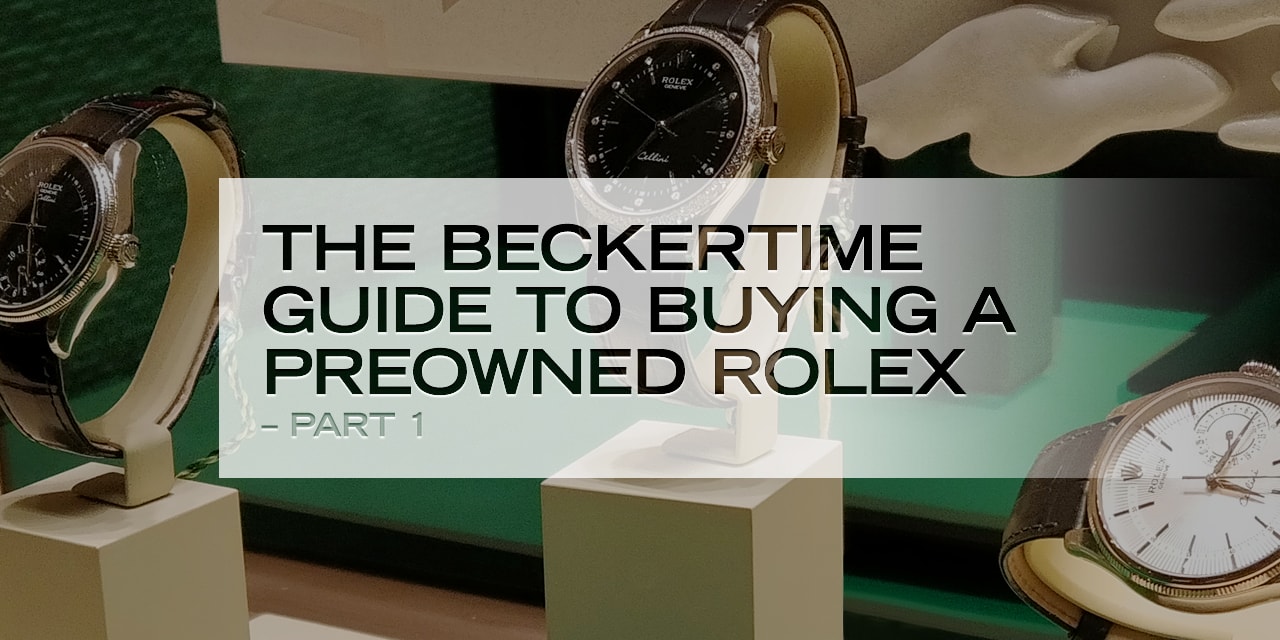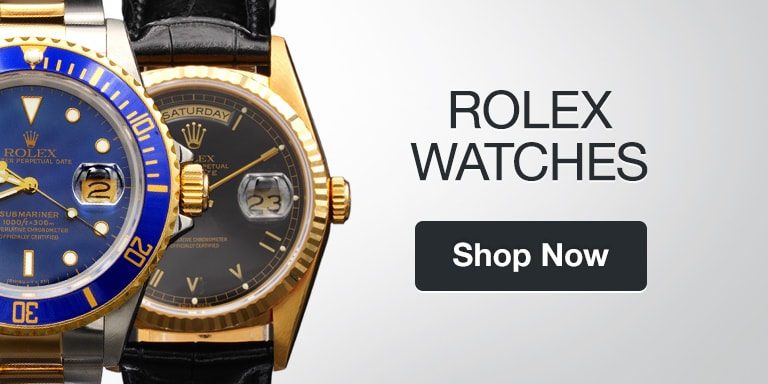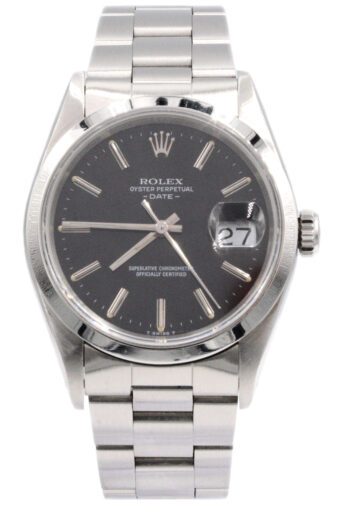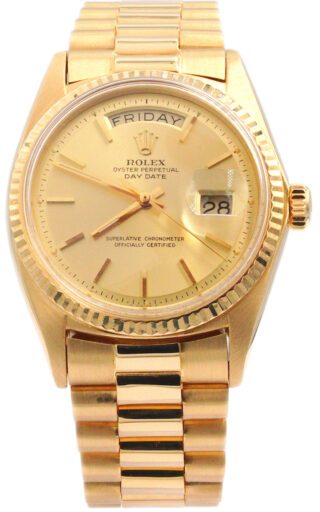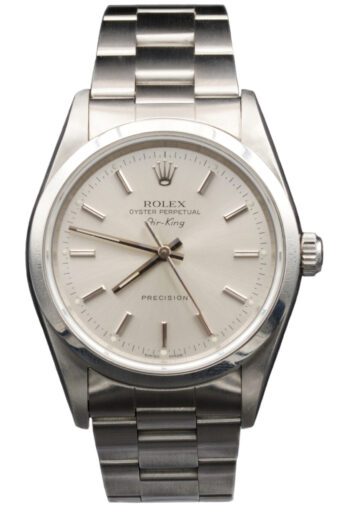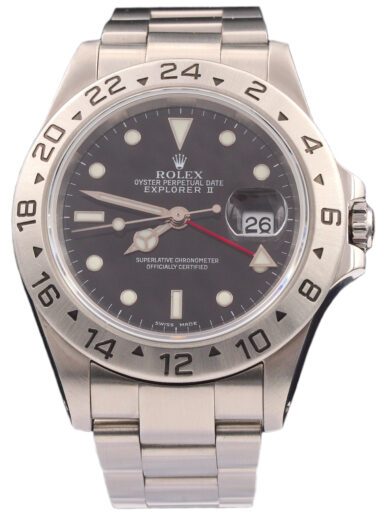The Beckertime Guide To Buying a Preowned Rolex. Part 1
To call the preowned luxury watch market robust is to greatly understate matters.
Last year, the industry totaled more than $26 billion, accounting for around 30% of all watch sales, and it is predicted to only grow stronger for the foreseeable future. Estimates for 2032 are currently around $32 billion or so.
Of that enormous total, Rolex dominates to an almost ridiculous degree. While exact figures are tough to come by, we do know that the crown’s share of the new watch market is equal to that of the next five brands combined, and the general thinking is their slice of the secondary market pie is bigger and juicier yet.
Whichever way you look at it, preowned Rolex watches are massively popular and the good news is we are currently living in one of the best periods in recent years to buy one.
The question is; what do you need to know to before you dive in?
Buying a Preowned Rolex Watch
There are a host of significant benefits for opting to buy your first or next Rolex watch on the preowned market. However, as with everything, there are a few potential downsides to be aware of as well, so we will cover both in our article below.
In part 2, we’ll take a look at where to buy and what to look out for.
The Pros
Availability
Arguably the biggest plus for buying your Rolex watch on the preowned market is that you are actually able to buy a watch. As facetious as that sounds, let me explain.
If you are dipping your toes into the world of luxury watches for the first time, you may hold the perfectly reasonable assumption that you could simply mosey into a Rolex Authorized Dealer and swap your money for any model that takes your fancy—ya know, as you can in most any store in the world. But, just because that entirely workable system forms the entire backbone of the global retail economy, unfortunately it really isn’t as easy as that when it comes to Rolex.
Whether you are of the opinion the manufacture is a victim of its own success or, if you are more cynically minded, believe it is a situation engineered by the watchmaker themselves, demand outstrips supply by a giddying margin and there is practically no way a first time buyer can get any but an extremely narrow selection of watches through official channels—and they will almost certainly not include any of the marque’s biggest hitters.
If you are lucky, your local AD might condescend to sell you a Datejust, although you will be offered a choice of perhaps two or three from a range which currently numbers into the hundreds. Want a Submariner? A GMT-Master II? A Daytona? Yeah, well, people in hell want ice water. Unless you are the sort of person who wins the lottery on a regular basis, you have precisely zero chance of acquiring the most well-known pieces through the Rolex retail network.
Apparently, the brand has invested a mountain of Euros in the last couple of years to build new manufacturing facilities in order to ramp up production, but it is still going to take a little while for that outlay to translate into an easier buying experience. For now, the likes of me, with no purchasing history at their nearest boutique, can’t even get a place on the waiting list for a new steel Submariner; a list, mind you, which is two years long. I know, because I tried last week.
The preowned market, on the other hand, is a different story—one which reads: see watch, buy watch, have watch.
You can purchase any of the contemporary catalog at the literal push of a button, including all the most in demand pieces, some of which even an official retailer might only get to see once a year or less.
As great as that sounds, though, it does come with a caveat, which we will get into in a minute.
Wider Selection
Hand in hand with vastly simplified purchasing, the sheer physical number of different watches available on the preowned market is exponentially higher than those available new.
Each year, Rolex introduces a fresh selection of models, while at the same time retiring just as many, if not more from their portfolio. That all makes sense, of course, but what if you had your heart set on a particular reference and it just happens to be on the list which got cut before you got the chance to buy it? The answer is obviously the preowned market.
Just about every watch Rolex has ever made will come up for sale on one platform or another at some point. Yes, it might take a bit of searching to track down the really rare pieces, but sooner or later they all turn up. You can even buy some which have never been worn—either the seller bought it from an Authorized Dealer then decided they didn’t want it or, much more likely, was someone with a long affiliation with said dealer, was able to buy it at retail and chose to sell it at a profit (again, we’ll look at this in more detail below).
But the biggest attraction as far as breadth of choice is concerned has to be the accessibility of vintage models.
Some things never go out of style, and there is something unequivocally and indefinably cool about vintage Rolexes. They are throwbacks to eras of effortless class and elegance, and each one wears its own unique story in the inherited flaws and imperfections on its dial, case and bezel. They have never been more popular than they are right now and the selection available is gigantic. Many collectors start off with their birth year model and, once bitten by the bug, end up with watch boxes crammed with pieces infused with charm and their own particular evocativeness. What’s more, due to Rolex’s well documented engineering prowess, a vintage example can generally perform as an everyday wear. And you will only get them on the preowned market.
Price
The subject of price as it concerns preowned Rolex watches is really a game of two halves. You can either save a lot of money buying as a secondary purchase, or else be forced to pay an extraordinary amount more. It all comes down to which model you want.
The two key factors at work are our old friends depreciation and supply and demand.
For the most part, a Rolex watch bought new from an official dealer will, like everything bought brand new, start to lose money the moment you leave the store. That means a watch’s first owner is going to take a hit when or if they chose to sell it on—great news for us scouring the preowned sites, with some experts estimating the drop in value on some pieces can be as much as 20%.
However, as said, this really applies to models such as the Datejust or Day-Date, maybe some of the Oyster Perpetual series; basically, the watches Rolex supplies the most of to their dealer network.
If you wanted one of the legendary names from the brand’s Professional Collection, commonly referred to as tool watches even though it’s been a while since any were used as such, then things are very different. The popularity of these pieces, coupled with the shortfall in allocation, has led to most commanding huge premiums if you fancy the latest version.
As an example, say you had always craved the be-all-and-end-all of dive watches, the Rolex Submariner. At retail, the price for the black dial and bezel example, the ref. 126610LN, is currently $10,250. A quick search on the biggest preowned websites shows us the cheapest we’re going to get one of this year’s models is $13,719. Or perhaps you have excellent taste and decide the steel Daytona ref. 126500LN is the only watch for you. Here the news is even worse, I’m afraid. If you were able to buy it at an AD (you aren’t) it would set you back the bargain price of $15,100. Best preowned rate for a 2024 example? A smidge under $29,000.
But, it is not all doom and gloom. Of the entire luxury goods industry, there really isn’t anything else which retains its value like a Rolex watch. Those models you were able to buy for 20% under the RRP? Chances are they’re not going to lose any more, meaning should you decide to sell it on in the future, you will likely get back most if not all the money you paid out in the first place.
And, of course, if you have chosen your watch well, it is very possible you will make a profit somewhere down the line. Although no one here is suggesting you buy a watch purely for its future investment potential, the fact is inescapable that certain pieces have exploded in value over the decades. How many of us would want to DeLorean it back to the early ‘60s and buy up handfuls of Paul Newman Daytonas dealers were begging customers to take off their hands, bring them all back to the modern day and retire to the Bahamas off the proceeds?
The Cons
There’s always two sides to every story, and just because buying a preowned Rolex comes with a host of upsides doesn’t mean we can ignore the potential pitfalls.
Building a Relationship
While this one may not concern the casual enthusiast, it is still worth mentioning.
As we’ve said, the possibility of buying a new Rolex from an official retailer is remote to say the least. But that is not the same as impossible.
The one thing you do have to do in order for your local AD to start giving you first dibs on any of the more desirable pieces that come through their doors, is to spend money with them. A lot of money.
Now, that can take the form of purchasing a bunch of Rolex watches you don’t particularly want, or perhaps buying different brands if they stock them, or maybe even some jewelry. Anything, basically, that means they are always pleased to see you when you walk in.
That way, you become a preferred customer and are likely to get the call ahead of others when that Pepsi GMT-Master II, which they may only get sent one or two a year from Rolex themselves, is up for grabs. And being able to snap that up at retail is going to save you an awful lot of cash.
Sticking only to the preowned sites means you’re not building that relationship and are going to be paying whatever the secondary market dictates is the going price.
The Dreaded Fake
In part 2 of this guide we are going to be diving into this topic in greater detail because it is, hands down, the most important factor to be aware of before buying a used Rolex.
Once upon a time, spotting a fake was simplicity itself. Shoddy dial text, ticking seconds hands and a general lack of quality all stood out a mile.
Today, with advances in tech such as CNC machines and 3D printing, it can be nigh-on impossible for any but the most dedicated experts to catch a counterfeit. And unfortunately, there are a lot of them about. Latest research estimates there are more than 23 million fake watches in the U.S. alone, half of which are Rolex.
It is imperative that you arm yourself with knowledge before making a purchase, and there is a plenty to know, which is why I’ll be covering it all in the second part of these articles. But if we boil it down to one tip, it is buy the seller.
This is an industry awash with vultures and shysters of every description, those with no compunction about stealing your money for their own gain. More than that, there is evidence that the counterfeit watch business has been used to fund terrorism, so it has never been more important that you buy only from reputable sources.
And we’ll give you all the information you need to do just that in the next post.
Featured Photo: Arto Alanenpää, CC BY-SA 4.0, via Wikimedia Commons. Mixed art by Oriol Mendivil.






